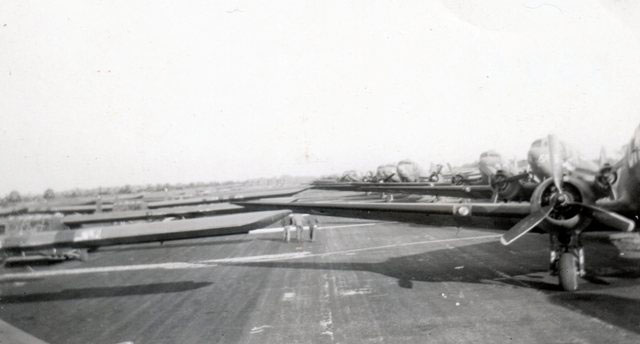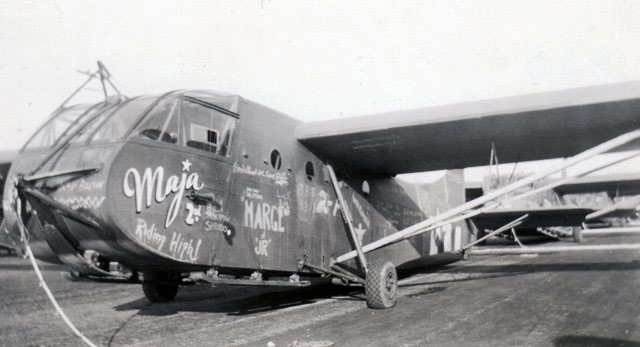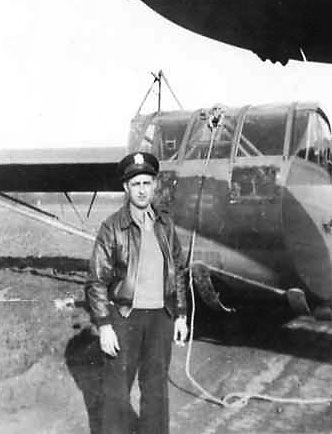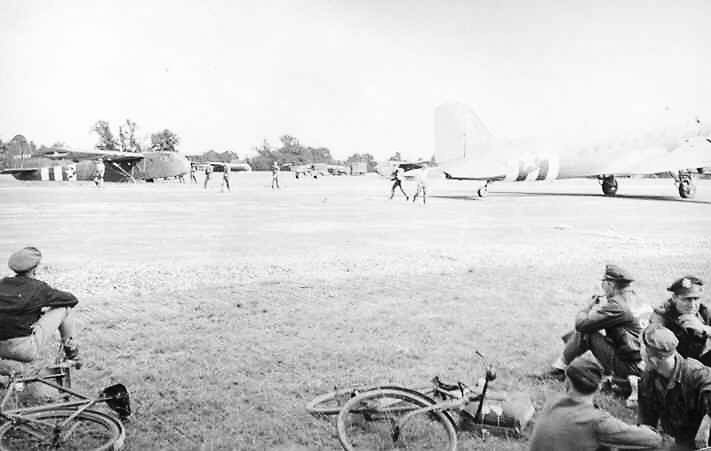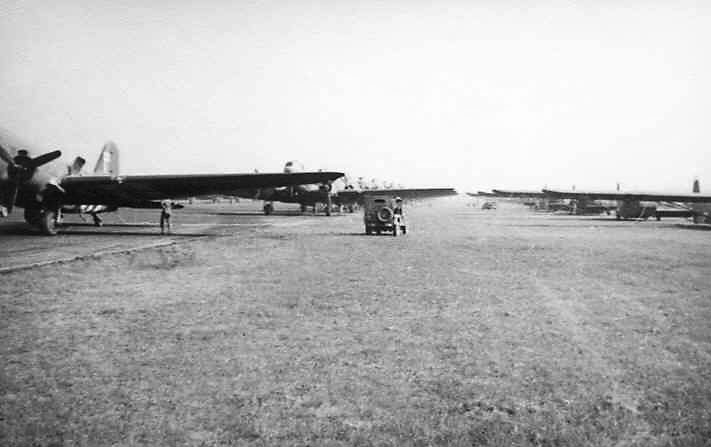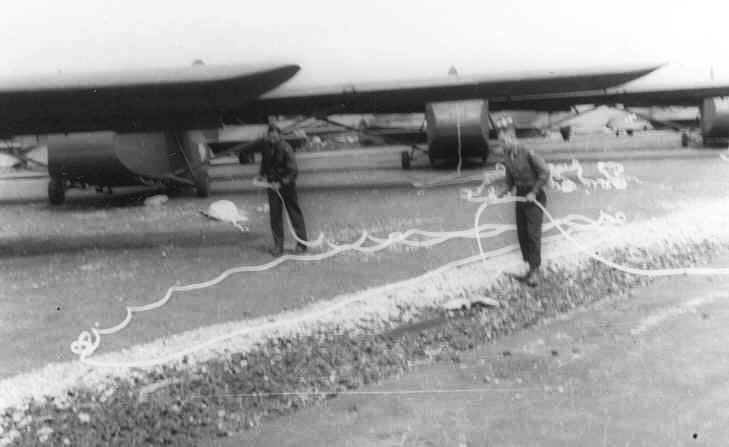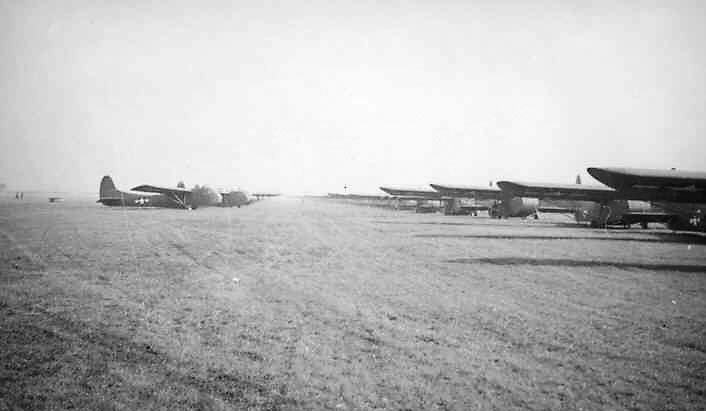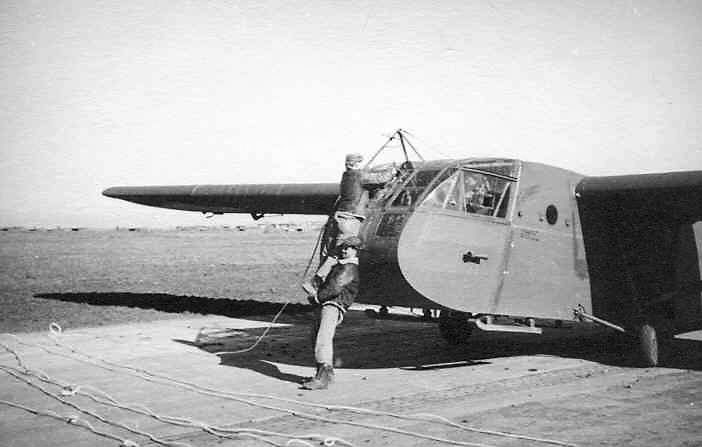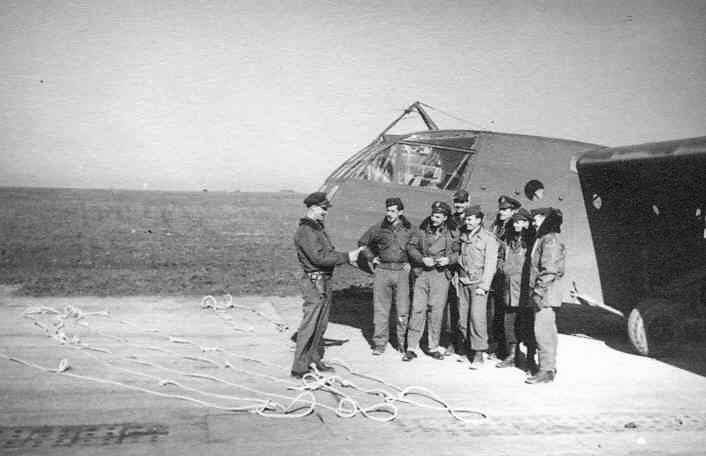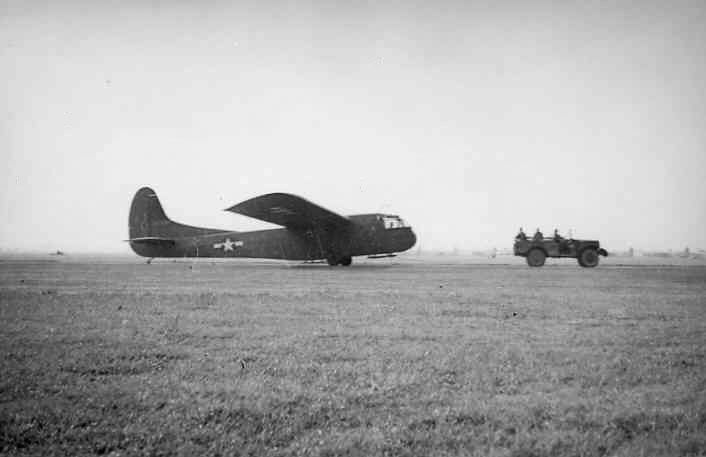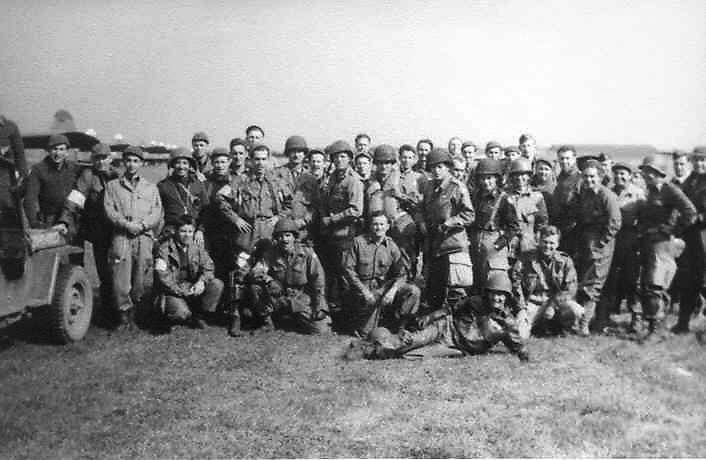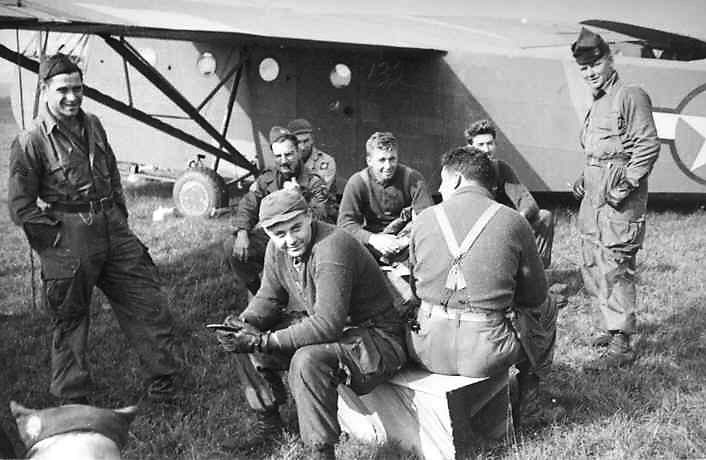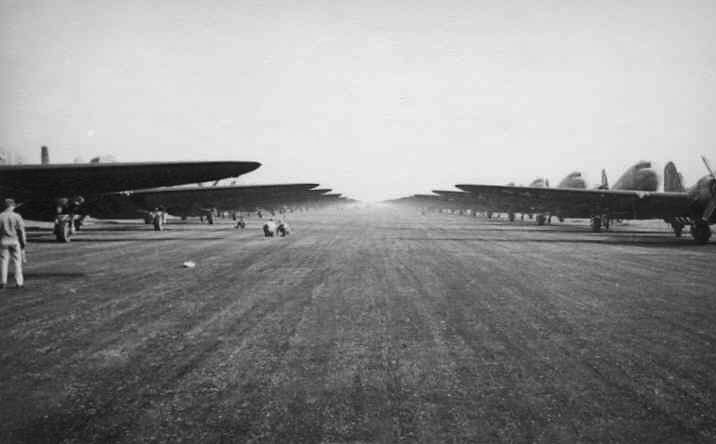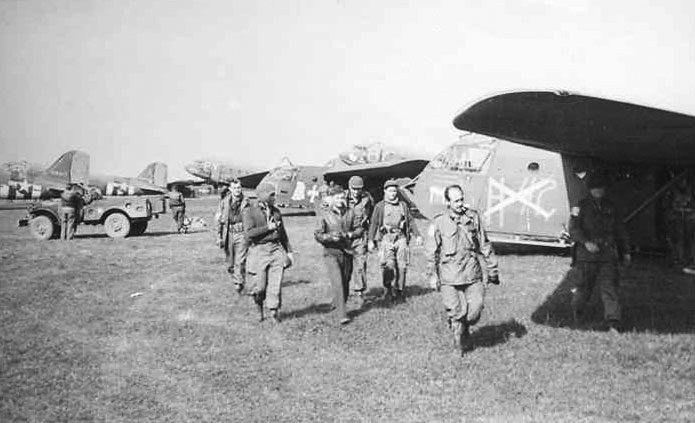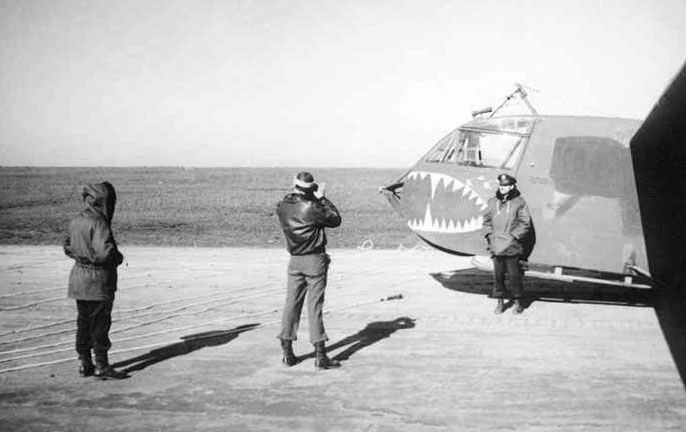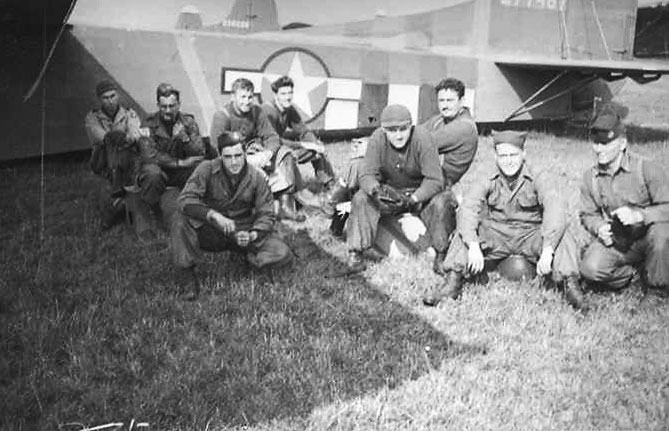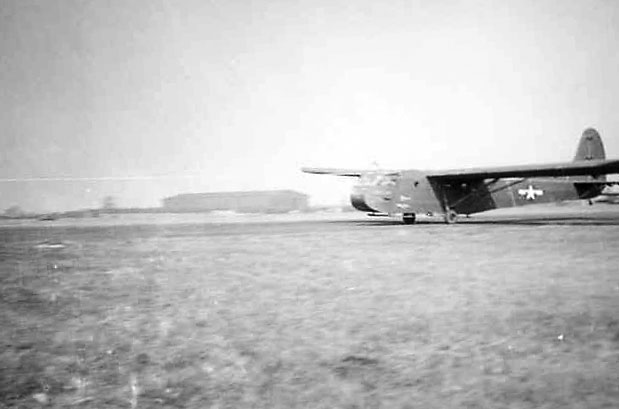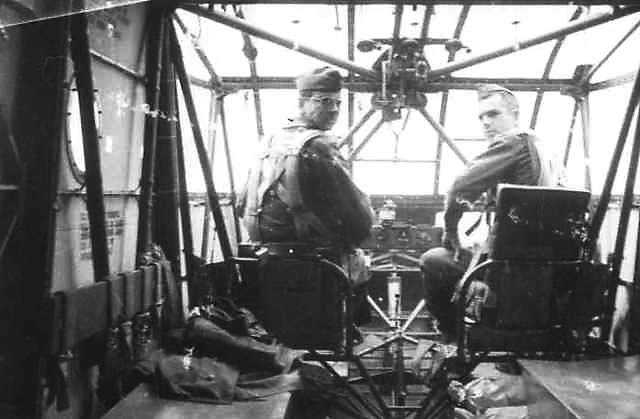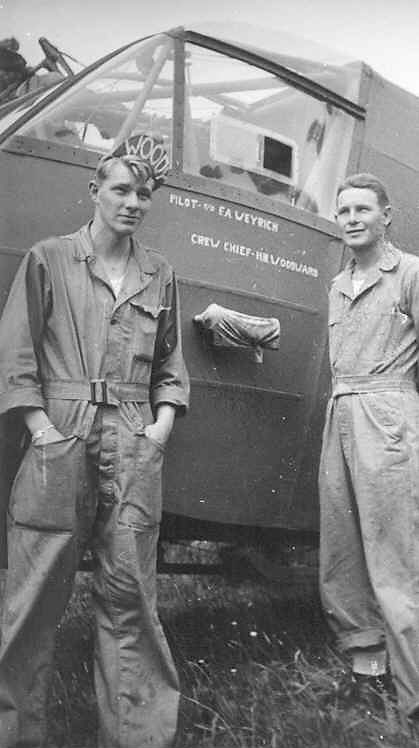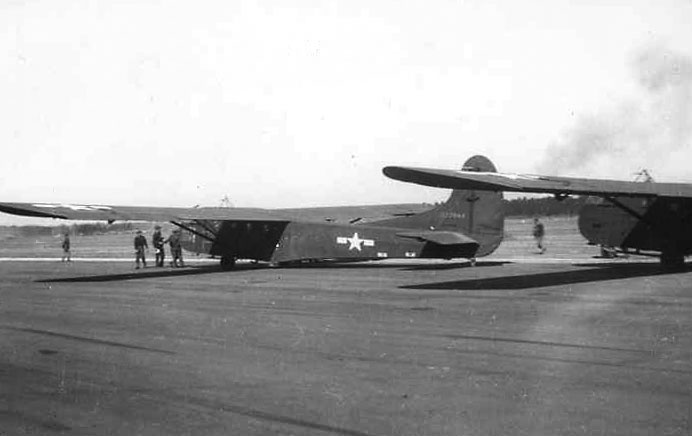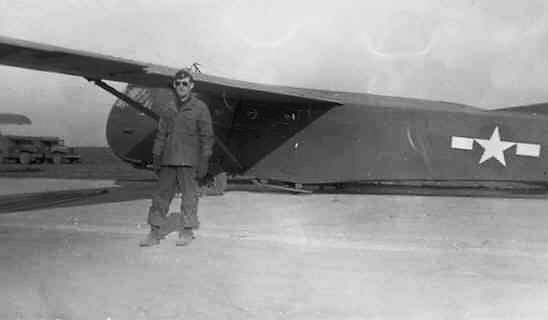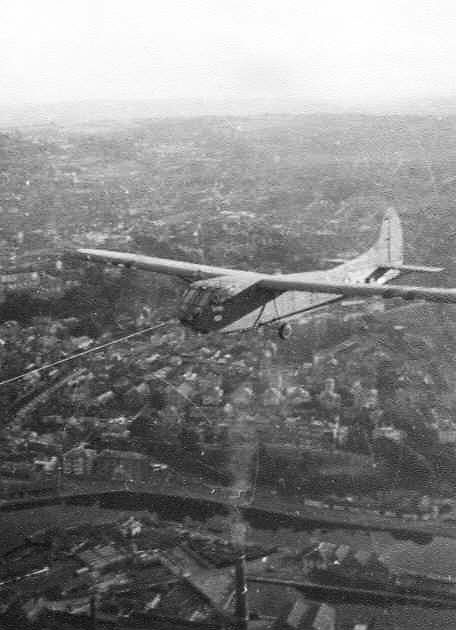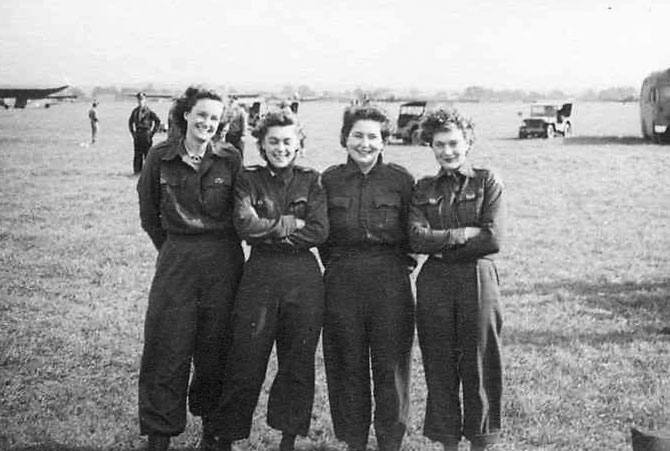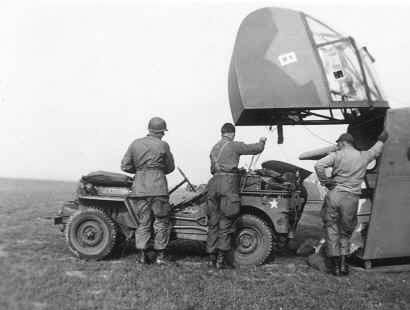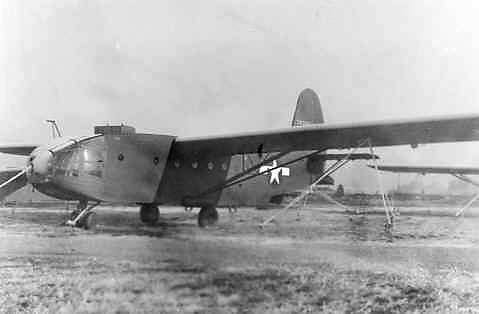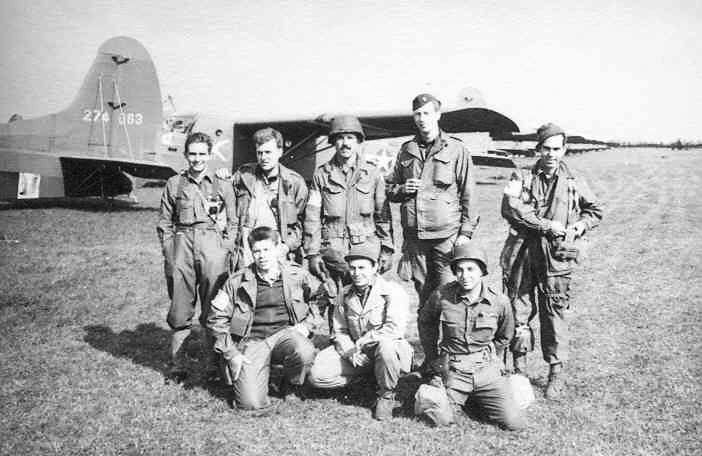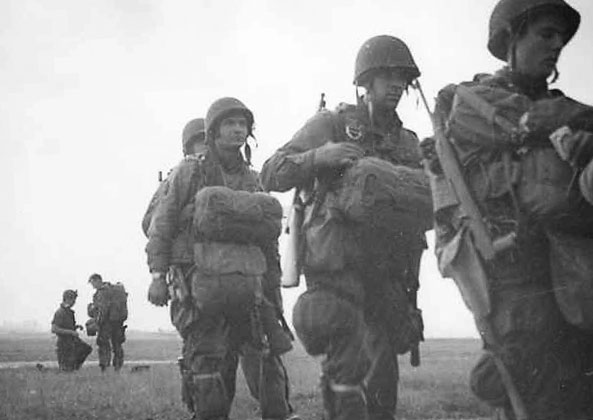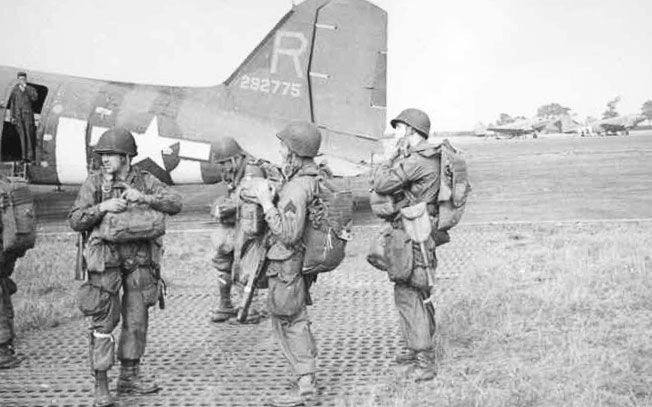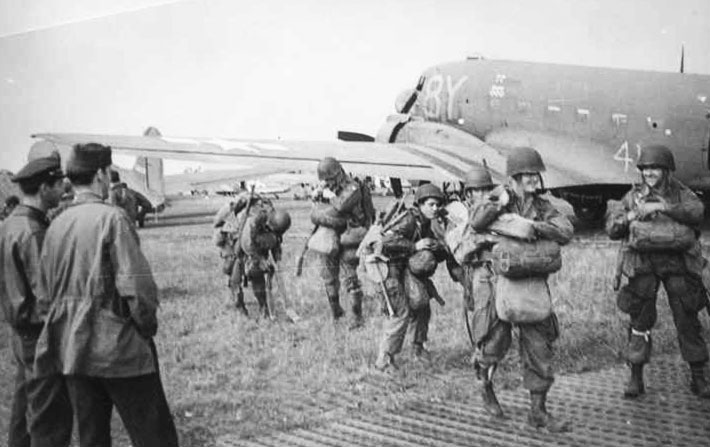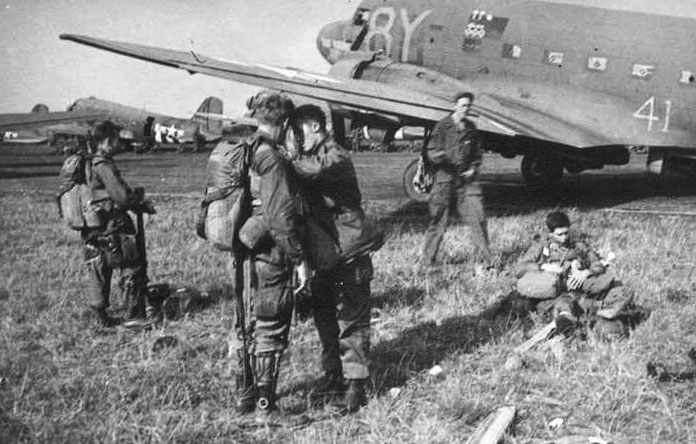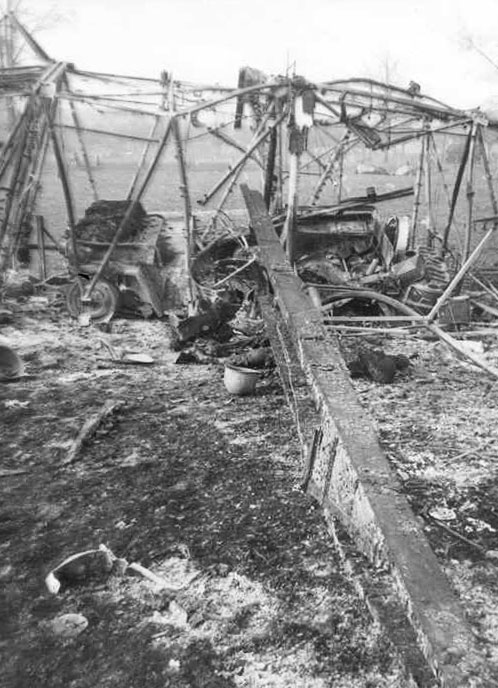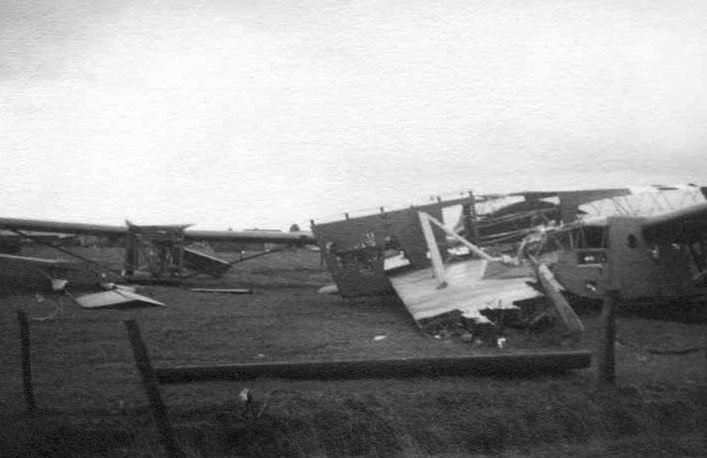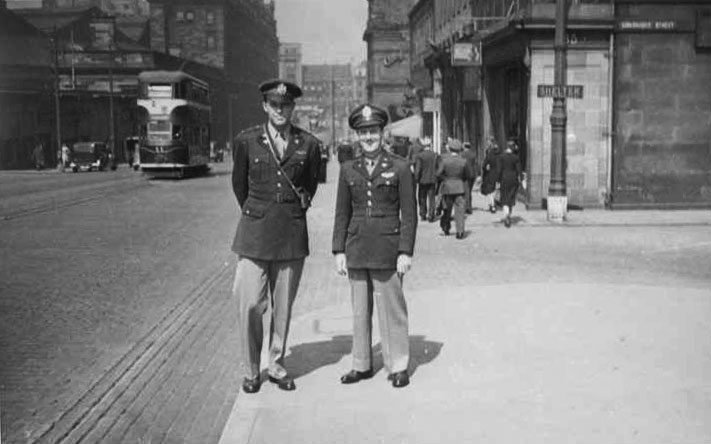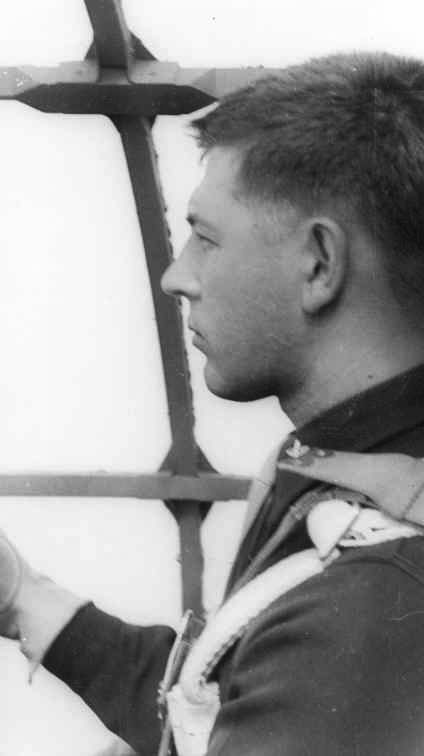CG4-A Gliders in England & France and preparing for the Holland invasion
This page does not show the glider activities at the former Atterbury Army Air Field, but is intended to showcase the daily life of glider pilots and crews overseas during the war. Many of the Glider Pilots stationed at Atterbury Army Air Field had already served in combat.
Gliders and tow C-47s in England during WWII at Wellford Park Base
These great CG4-A glider and tow C-47 photos are donated to the museum by Andy Csordas and taken by his father-in-law, George Rutler, in England at the Wellford Park Base. George was with the 77th Troop Carrier Squadron 435th Troop Carrier Group. These photos are of gliders and planes ready for "Operation Market Garden." His "Brownie" camera took good photos and preserved history well.
The snapshots featured below were taken by glider pilots and crews and recorded their history. These rare photos show the men, their uniforms, and equipment before they flew into combat in the Holland invasion. Many did not survive the war. Museum volunteer Bruce Dalton was one of those WWII Glider Pilots who flew into combat during the Holland invasion. Bruce was a member of the 43rd Squadron of the 315th, stationed at Spanhoe, near Kettering, England. He was also stationed at Amiens, France. Bruce was TDY to the 434th Wing, which was stationed at Aldermaston, England for a planned mission that was scrubbed. The 434th was based at Bakalar Air Force Base, Columbus, Indiana, from July 1959 to July 1969.
These great CG4-A glider and tow C-47 photos are donated to the museum by Andy Csordas and taken by his father-in-law, George Rutler, in England at the Wellford Park Base. George was with the 77th Troop Carrier Squadron 435th Troop Carrier Group. These photos are of gliders and planes ready for "Operation Market Garden." His "Brownie" camera took good photos and preserved history well.
The snapshots featured below were taken by glider pilots and crews and recorded their history. These rare photos show the men, their uniforms, and equipment before they flew into combat in the Holland invasion. Many did not survive the war. Museum volunteer Bruce Dalton was one of those WWII Glider Pilots who flew into combat during the Holland invasion. Bruce was a member of the 43rd Squadron of the 315th, stationed at Spanhoe, near Kettering, England. He was also stationed at Amiens, France. Bruce was TDY to the 434th Wing, which was stationed at Aldermaston, England for a planned mission that was scrubbed. The 434th was based at Bakalar Air Force Base, Columbus, Indiana, from July 1959 to July 1969.
C-47 and CG4-A at Bottisford, England, gliders and C-47's lined up for the
Holland invasion, preparing for a ferrying mission from Greenam Commons, England
Holland invasion, preparing for a ferrying mission from Greenam Commons, England
CG4-As lined up for the Holland mission
A glider being hooked up for take-off.
Most of these photographs are from the John Wallace collection donated to the museum by his brother-in-law, Keith Watkins of Noblesville, Indiana, a Korean War era Navy Veteran.
Most of these photographs are from the John Wallace collection donated to the museum by his brother-in-law, Keith Watkins of Noblesville, Indiana, a Korean War era Navy Veteran.
Preparing for a practice glider trip
A CG4-A being towed to the line for take-off
Glider Pilots just one half hour before their take-off for the invasion of Holland
Glider Troops before the invasion mission
C-47s in line for the invasion flight
Walking to the CG4-A Gliders to get set for take-off for Holland, before a practice take-off
Glider Troops before the invasion mission
Pilots ready for take-off in a CG4-A Glider, with glasses Howell Lindsey and Paul Lowry.
A CG4-A Glider on a take-off roll.
A great photo of the interior of a CG4-A.
The pilots and nose section of a CG4-A Glider that is now
on display at the Atterbury-Bakalar Air Museum.
The pilots and nose section of a CG4-A Glider that is now
on display at the Atterbury-Bakalar Air Museum.
Two crew members and the nose section of a CG4-A Glider
Two CG4-A Gliders lined up for take off in North Carolina
A pilot and glider "somewhere in France"
A CG4-A over Paris
Red Cross girls on a field in England before the Holland mission
Glider crew before the Holland invasion mission
Paratroopers preparing for the mission. Note the rare pistol grip 30-caliber carbine the trooper has slung over his shoulder in the third photo. Note the unit markings of 8Y on the C47 aircraft. The squadron code 8Y is of the 96th Troop Carrier Squadron of the 440th Troop Carrier Group of the 50th Troop Carrier Wing. The 96th TCS was stationed at Exeter, England, home base of the 50th TCW.
From left to right, paratroopers preparing to load up
A burned out CG-4A Glider that had a Jeep on board and what appears to be a fatality under the burned out wing spar. Note the helmets in the wreckage.
Damaged CG4As.
Two glider pilots in Edinburgh, Scotland, John L. Lowden and John J. Wallace. Note the Tram and the air raid shelter sign on the light post.
These photographs were donated to the Atterbury-Bakalar Air Museum by family members of a WWII Glider Pilot. Research is still in progress to get more information about the photos. Some of the photos had notations written on the back of them and the information is from those notations.
